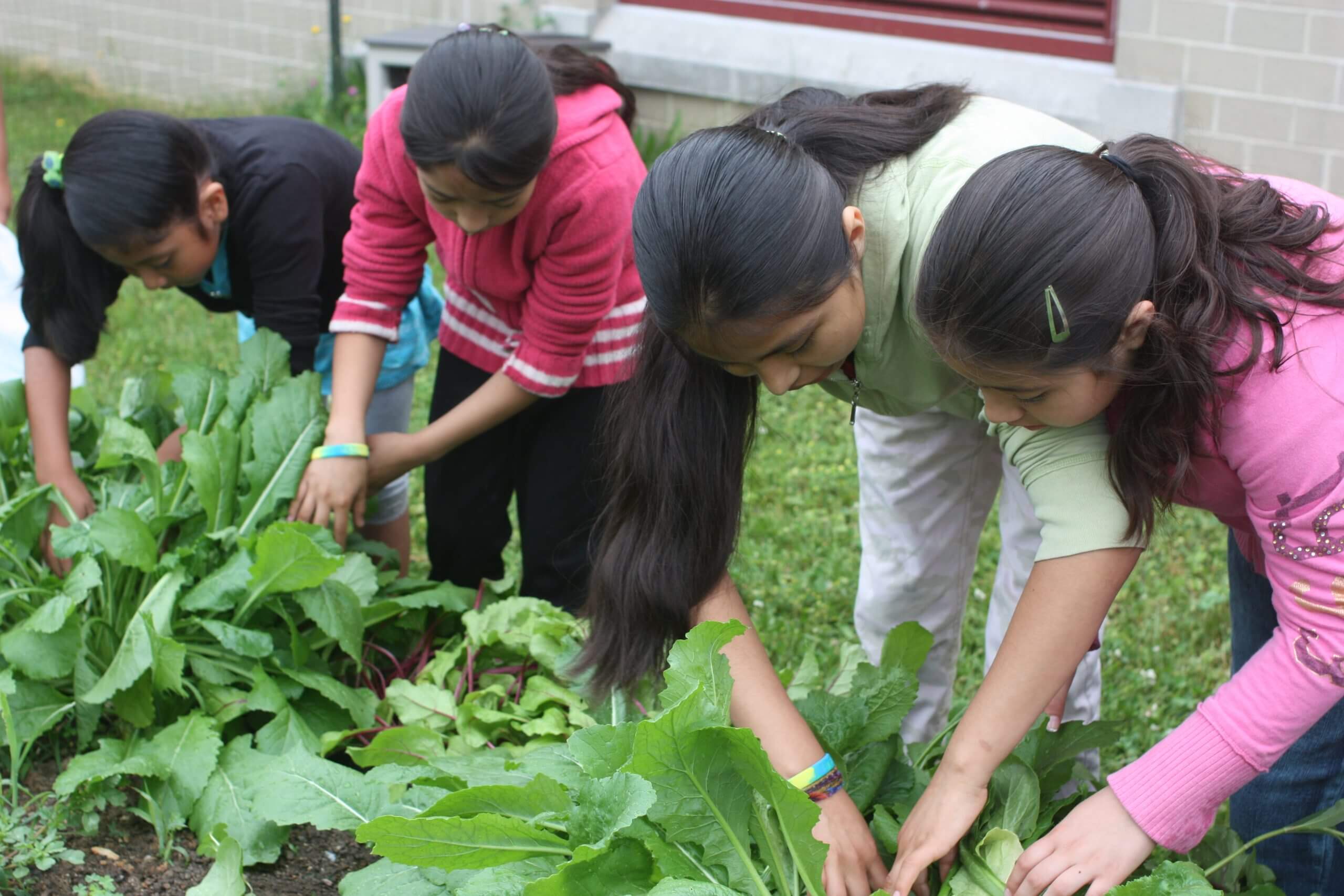Growing flowers from seed with your kids is a lesson in biology, but it’s also fun and a great snow day project. It’s best when the flowers you choose are really colorful, easy to grow, and great for pollinators and bouquets.
Tag: Kids’ Gardening
Generational Family Gardening with Kids
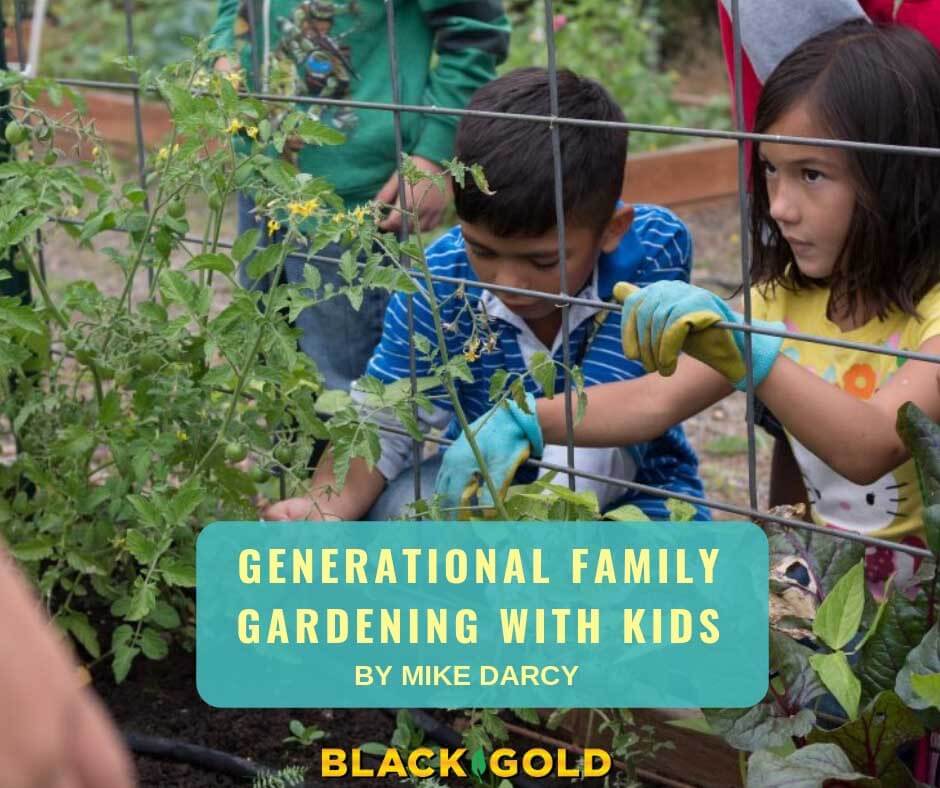
Gardening is best shared with multiple generations, especially for our youngest gardeners. Whether we gardeners have our own children, grandchildren, or children in the neighborhood, it is an easy role to fill. Young Millennial families are embracing gardening, so the goal for older gardeners should be to share our garden knowledge to inspire young, budding plant lovers. When everyone gardens, young and old, everyone wins.
A home garden, whether it be a small potted garden or raised bed full of vegetables, is the most natural place for kids to first discover gardening! Let them pick the flowers, harvest tomatoes, or help water and weed. Something as simple as pulling a deep dandelion root can be a great learning experience. It’s all about being outdoors and instilling a love of the earth and all the great growing things it sustains.
Gardening at home is where it starts for most families, but there are other more formal ways for gardeners to share their knowledge with the next generation. States across the country have programs to get kids involved in gardening at an early age, beginning in elementary school and continuing through high school. Most programs like these were inspired by the ground-breaking Edible Schoolyard program in Berkley, California. These are great places to volunteer your time and expertise. (Click here to learn more about national youth gardening programs).
Farm to School
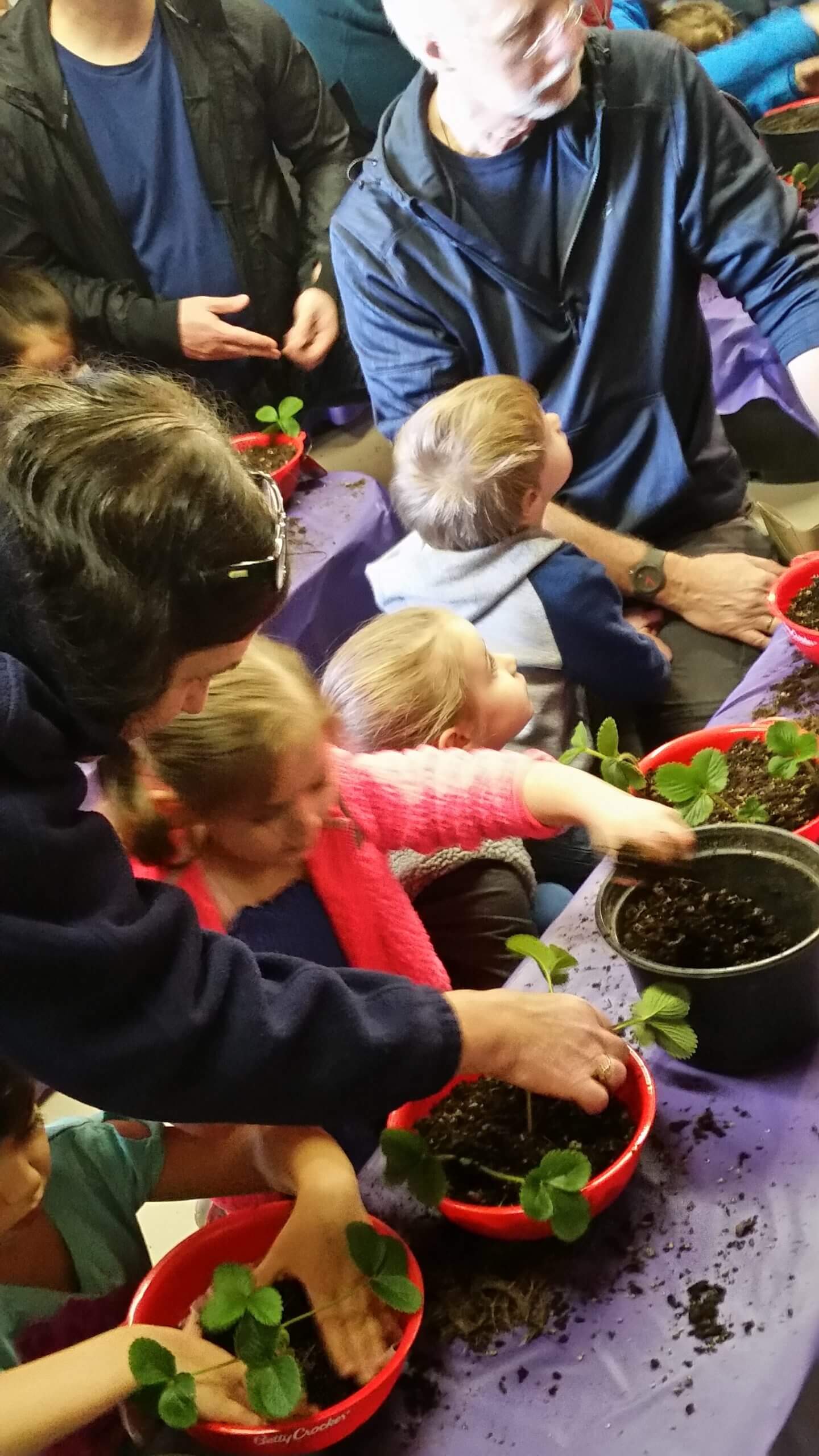
One such program in my state is through the Oregon Department of Education called Farm to School program. The goal of Farm to School is to establish school vegetable gardens, started and maintained by students from seed to harvest. Currently, 46% of in Oregon public schools participate in the program. It is an excellent way to get kids started in gardening while also giving them the benefit of extra outdoor physical activity. Students learn botany and horticulture, but also science, math, nutrition, and health. Volunteer gardeners are often invited to help support Farm to School gardening activities.
Local gardens and garden centers may also provide garden support to families. Locally in the Portland, Oregon metro area, a local chain of garden centers, Al’s Garden Center, has sponsored a Kid’s Club for over twenty years, with events specifically designed for kids. Classes may be about planting strawberries or “Growing an Edible Rainbow” of tomatoes, purple beans, cucumbers, and sweet corn. In addition to the actual planting, the teachers have a lesson plan to explain what it is they are planting and how it will
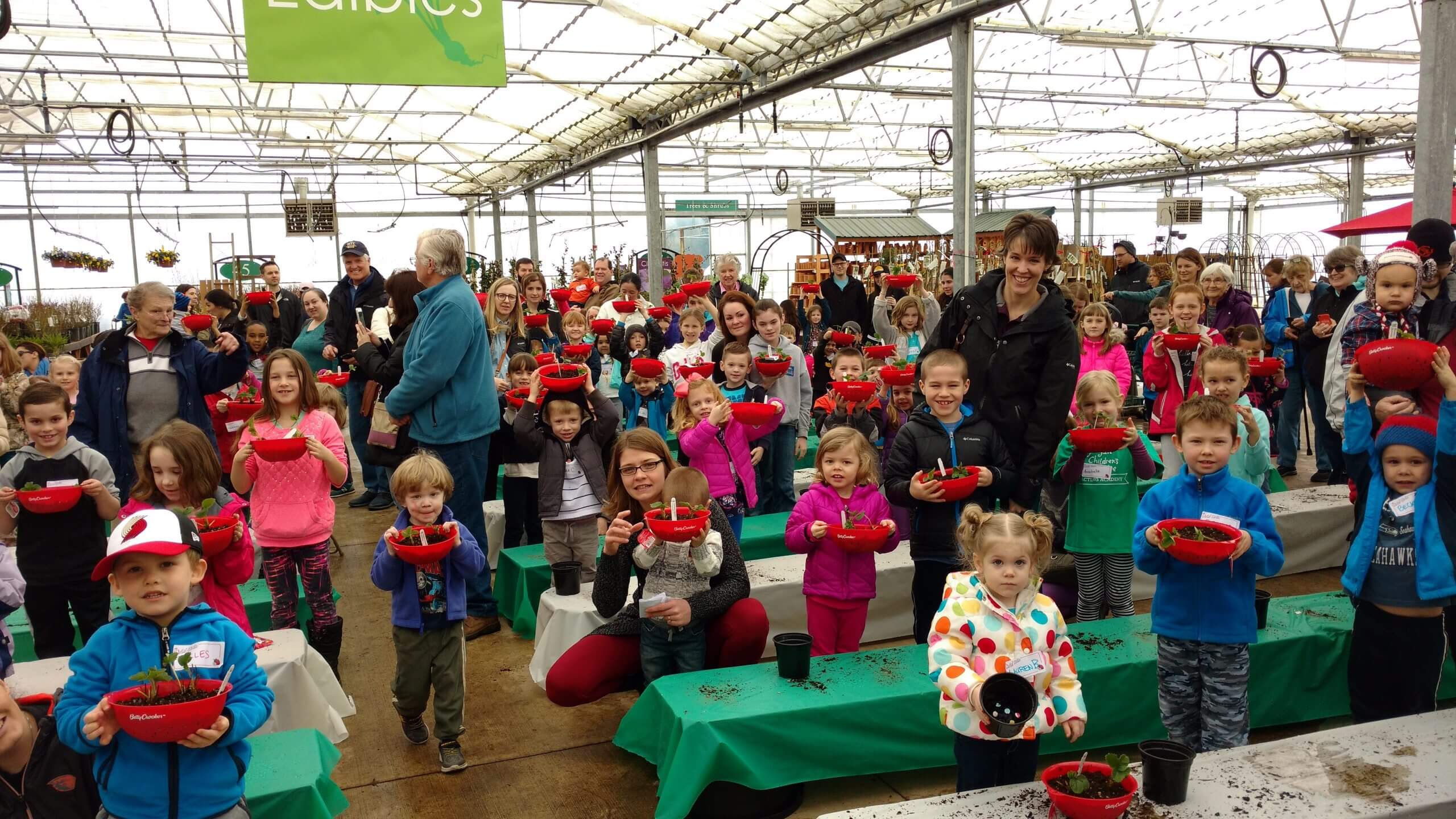
grow. (The Kid’s Club coordinator told me that many former Kids Club members, now adults with families and gardens of their own, have personally thanked her for everything they learned in the program!)
Public Gardens are also a great resource for gardening families and kids. Bellevue Botanic Garden in Seattle, Washington has great programs for kids, including popular “Kids in the Garden” sessions. (To discover a public garden near you, click here.)
Kids’ Gardening Tips
Through the years, I have visited classrooms to teach kids about gardening and taught my own grandchildren to garden. Here are a few tips that I have learned along the way:
- Select a vegetable that kids like. (Veggie list for kids)
- Many young kids do not like big tomatoes, so I avoid them.
- Plant seeds that are large like peas, corn, or beans. (Seed list for kids)
- Nasturtiums and sunflowers are great flowers for kids because their seeds are easy to handle and they germinate quickly.
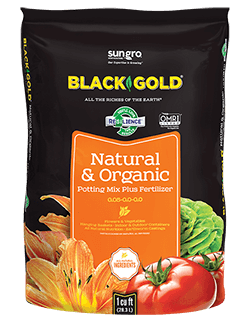
For hands-on seed-planting lessons, I take a bag of organic Black Gold Natural & Organic Potting Soil and fill lots of small, sturdy pots for the kids. In my experience, they love to put their hands in the soil, and for some, it will be their first time! They always enjoy planting time and watching their seeds sprout. I often take a nasturtium plant in bloom to show the kids what it will look like. Then I let them try a nasturtium leaf or stem, explaining that it will be spicy. This is always a fun project.
It is good news that we are seeing more families gardening, and I believe it is largely fueled by the organic vegetable movement. This movement has succeeded in making people more aware of the food they eat, where it comes from, and how it is grown. It has been a huge incentive for parents to begin a vegetable garden, even if gardening was not part of their history.
For those with limited space, growing vegetables in a container on a deck or patio can easily be accomplished. (Click here to learn how to grow vegetables in containers.) With grandparents and parents gardening, and the kids watching and learning, hopefully a new generation of gardeners is being born.
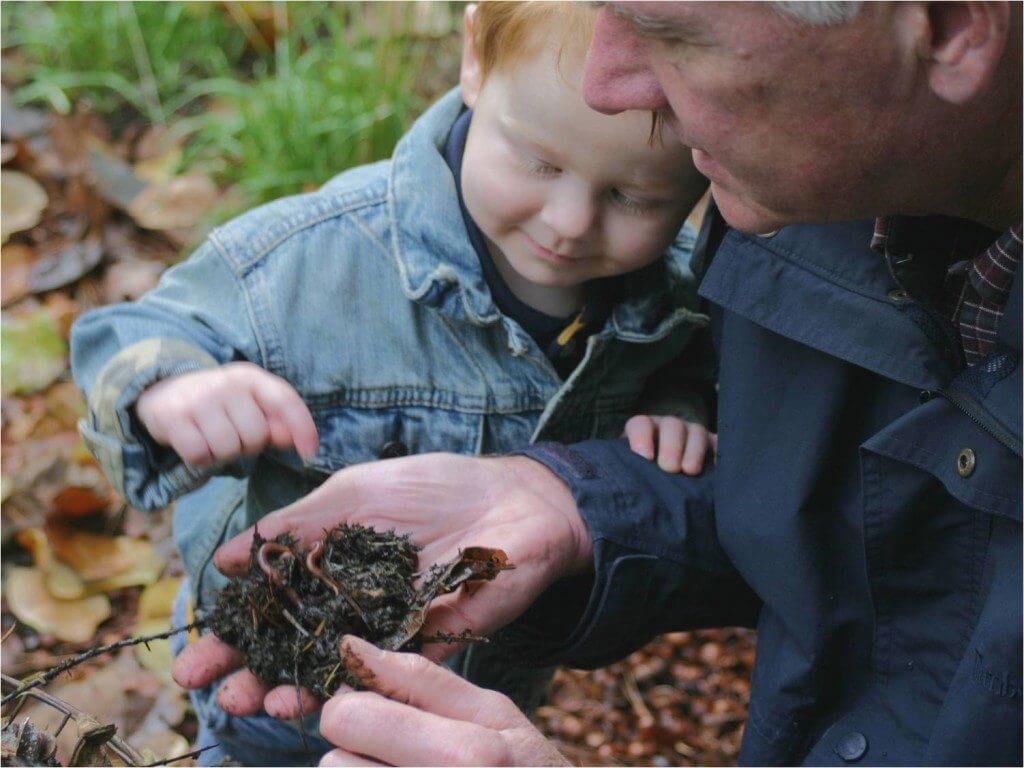
Kids Gardening Fun in Fall
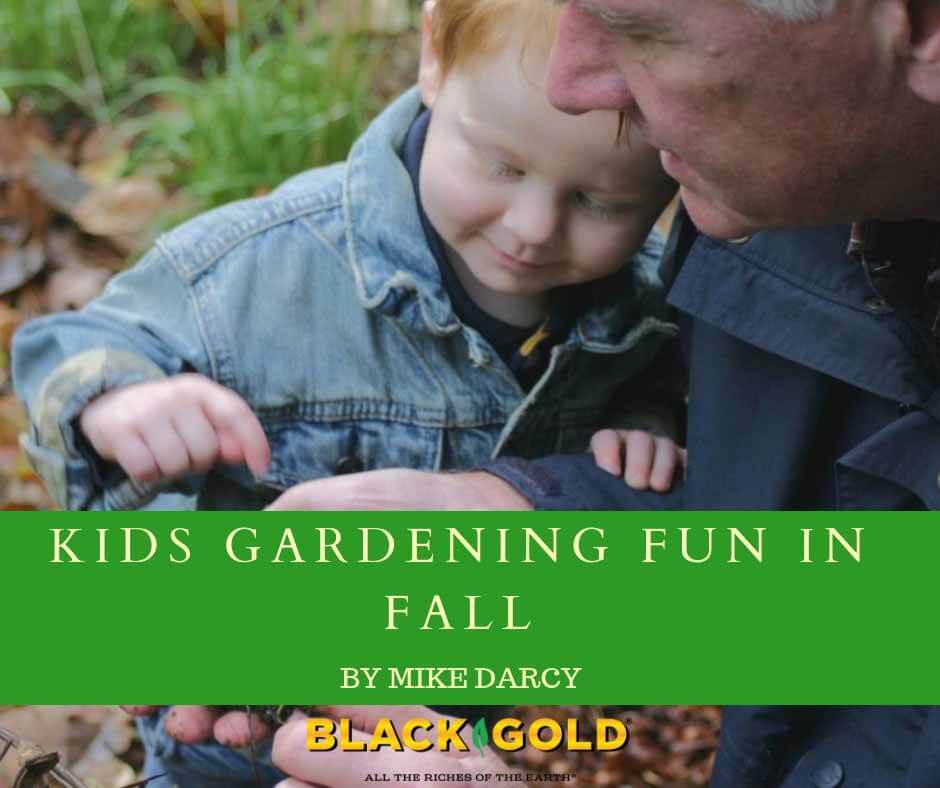
As gardeners, I believe that one of the most important things we can do is to encourage young children to garden. With our urban society, many kids have no connection to the earth, and in many cases, gardening is foreign to them. Luckily many communities offer community garden plots, but these generally tend to be used by adults, and when I visit local community gardens, I rarely see kids. Therefore, it is often up to us as adults to get some programs started that are especially geared for kids.
Fall is an excellent time to begin a conversation with kids about gardening as there is so much happening that is readily visible. For example, here in the Pacific Northwest, many of the deciduous trees are turning brilliant shades of color, certain birds are migrating and perhaps making stops in local garden or parks. Fall bulbs are available, and fall is a perfect time to talk about composting, why we do it and how.
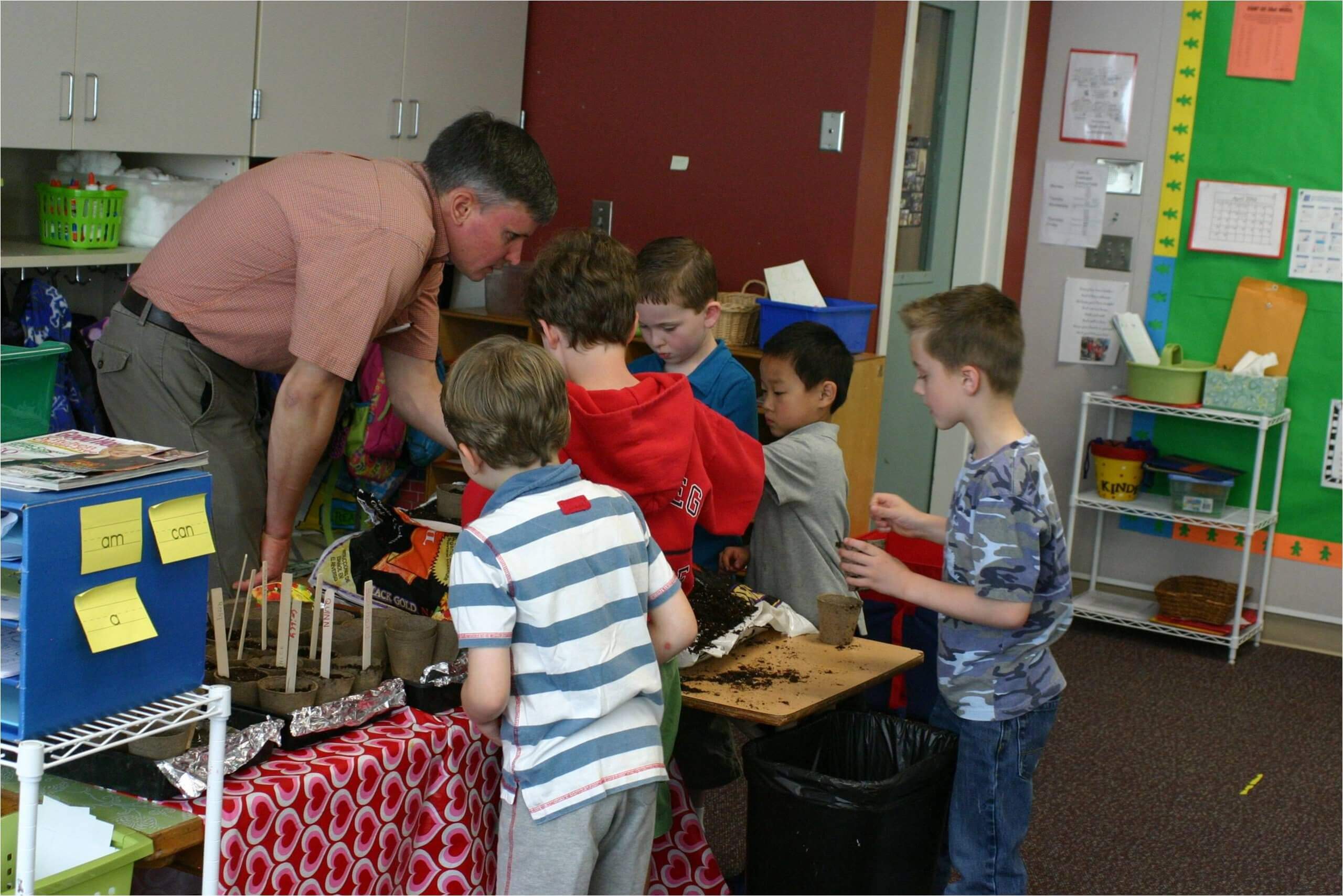
Hands-On Gardening Lessons
For many years I have done a ‘hands on’ lesson on growing seeds to 1st graders. I use nasturtium seeds because they are large for small hands to handle and they germinate quickly. Each child gets a 4-inch plastic pot, a wooden label to write their name on and three to four nasturtium seeds. I also have a bag of Black Gold Natural & Organic Potting Soil that I open and each child puts soil in their pot and then with their fingers, make a depression for each seed. I remember the first time I did this, one of the students asked me if it was okay to touch the soil. Hearing that question for the first time was a surprise, but now it is not an unusual question.
October is the month when fall bulbs have arrived in garden centers. Think about the age of the children you are working with, but from about 1st grade on, ‘forcing’ a paper white narcissus is an ideal way to introduce bulbs to kids. Paper white narcissus grow quickly with some green sprouts usually appearing in less than a week. Flowers also appear within 4-6 weeks, so this lesson is one that kids can see results in a relatively short period of time.

Composting with Kids
There is no better time of year than now to teach kids about composting, especially with fall leaves. We have a compost bin in our garden, and our kids (and now our grandkids) have grown up knowing what it is for. It is the place we put vegetable kitchen scraps, grass clippings, and now lots of leaves. When our kids were young, I would put pieces of plastic in the compost bin to teach them that plastic is plastic forever. Our compost bid is also teaming with red worms and our kids have learned that holding worms is a very natural thing. This may seem fairly ordinary but when I take a container of compost with worms to young kids at a school, many are very reluctant to touch them.
 With the budget issues of many school districts, I find they are almost always appreciative to classroom activities that parents can provide that pertain to gardening and/or our environment. It is not necessary to have had classroom teaching experience as I have found that for gardeners to talk about gardening and make it pertinent for kids is very easy and something we can all do. October is an ideal month to give some lessons on composting leaves and to explain the benefits of doing it. The kids will be thrilled and you will be pleasantly surprised at how good it will make you feel.
With the budget issues of many school districts, I find they are almost always appreciative to classroom activities that parents can provide that pertain to gardening and/or our environment. It is not necessary to have had classroom teaching experience as I have found that for gardeners to talk about gardening and make it pertinent for kids is very easy and something we can all do. October is an ideal month to give some lessons on composting leaves and to explain the benefits of doing it. The kids will be thrilled and you will be pleasantly surprised at how good it will make you feel.
School Garden Power!
Gardens are powerful teaching tools that feed kids in more ways than one. They get kids outdoors and teach them about healthy eating, science, sustainability, teamwork and mindfulness. School gardens supply students and their communities with fresh, wholesome food for better health. Every school—urban or rural—should have a thriving school garden. That’s why Black Gold has teamed up with the National Gardening Association (NGA) and KidsGardening.org to help put gardens in schools. This effort is also supported by the Today Show’s Carson Daly through the Shine a Light program; Carson has created a Crowdrise fundraiser to help support NGA school gardens. (Click here to donate to Carson’s Crowdrise campaign.)
Kids and Compost
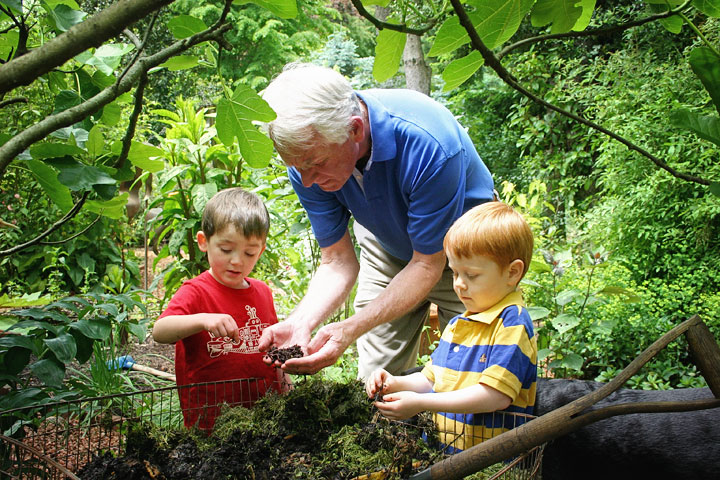
In my garden, I have a compost pile that gets our kitchen vegetable scraps, coffee grounds, tea bags, and grass clippings. As you can see by the photo, I believe it is important to get kids involved in gardening and letting them learn about compost and worms is a good start. Compost is so beneficial to the soil and I add some whenever I am setting out new plants. I never have enough of my own and so I am constantly using Black Gold Garden Compost Blend when planting. It is amazing how much it improves the soil.
Kids Gardening: Growing Radishes
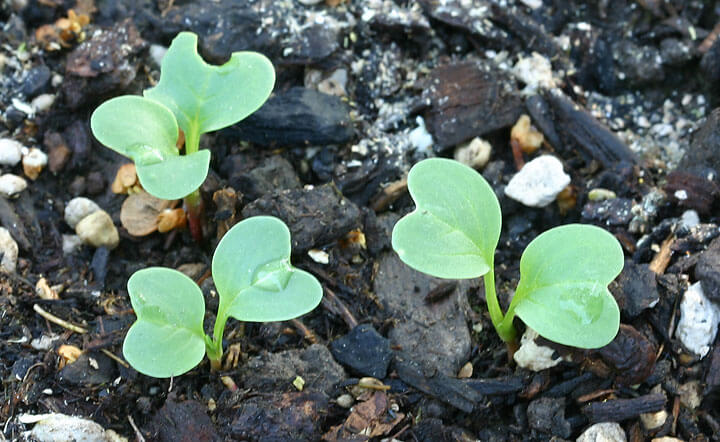
It is always fun getting children involved in a gardening activity and allowing them to start plants from seed is a great introduction to the world of gardening. When choosing a gardening activity for children be sure to pick something that will germinate quickly, grow fast, and mature in a short time. Growing radishes with kids is one easy way to make gardening fun!
Radishes are a good choice. They will germinate in only a few days in spring, if planted in full sun and grown in fertile ground amended with Black Gold Garden Compost Blend. The process is simple: create your rows, sprinkle the seeds along them, cover lightly and then water. Your kids should check them every few days for germination.
Once the seedlings have germinated, thin them to a distance of around 2 inches apart. Then give them good care, making sure they get a drink every few days or so. In only 40 to 45 days you will have crisp, sweet radishes. Kids just loving pulling them from the ground!
Mild-tasting varieties, like the French breakfast radish ‘D’Avignon’, are best for small children.


